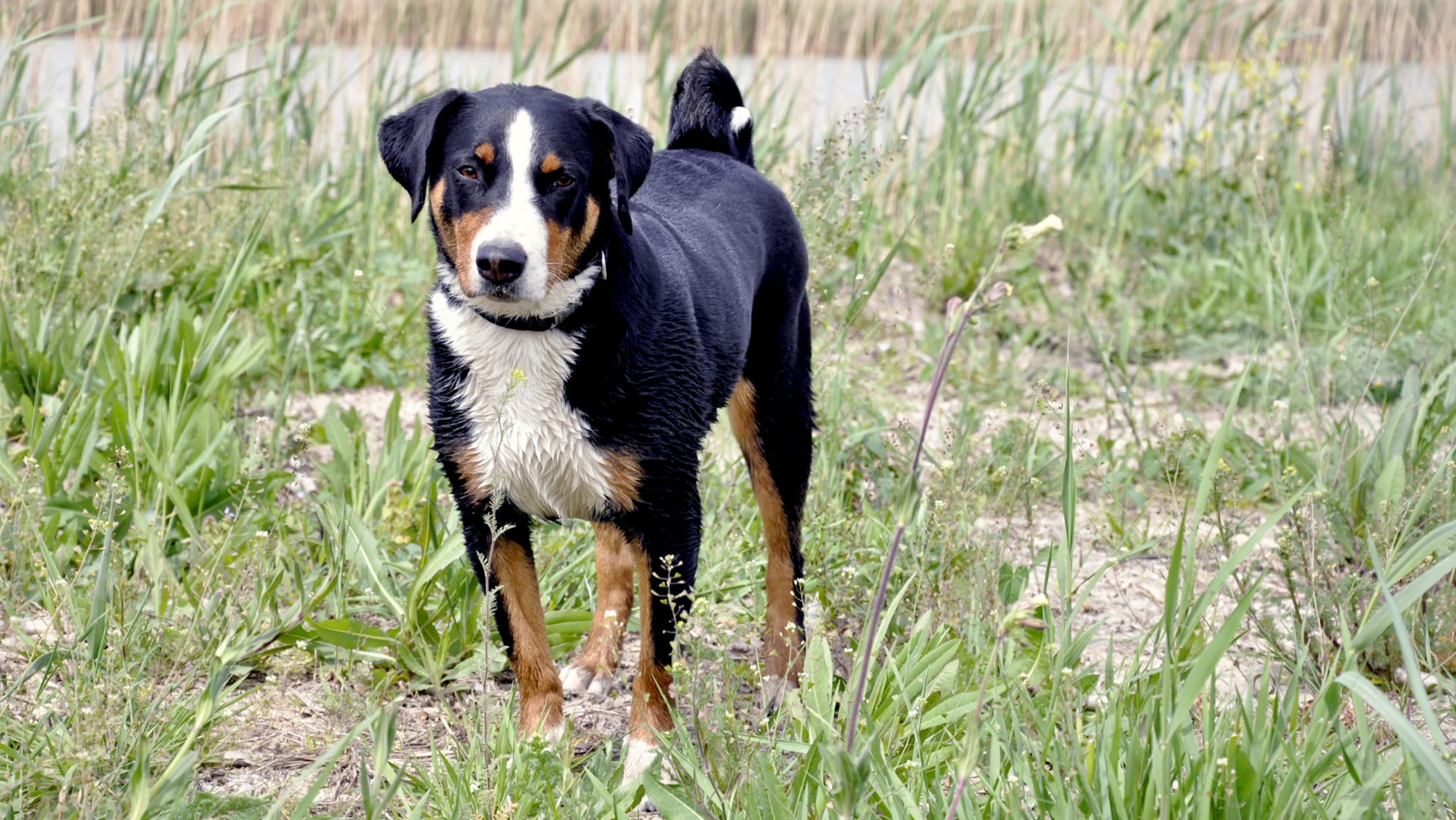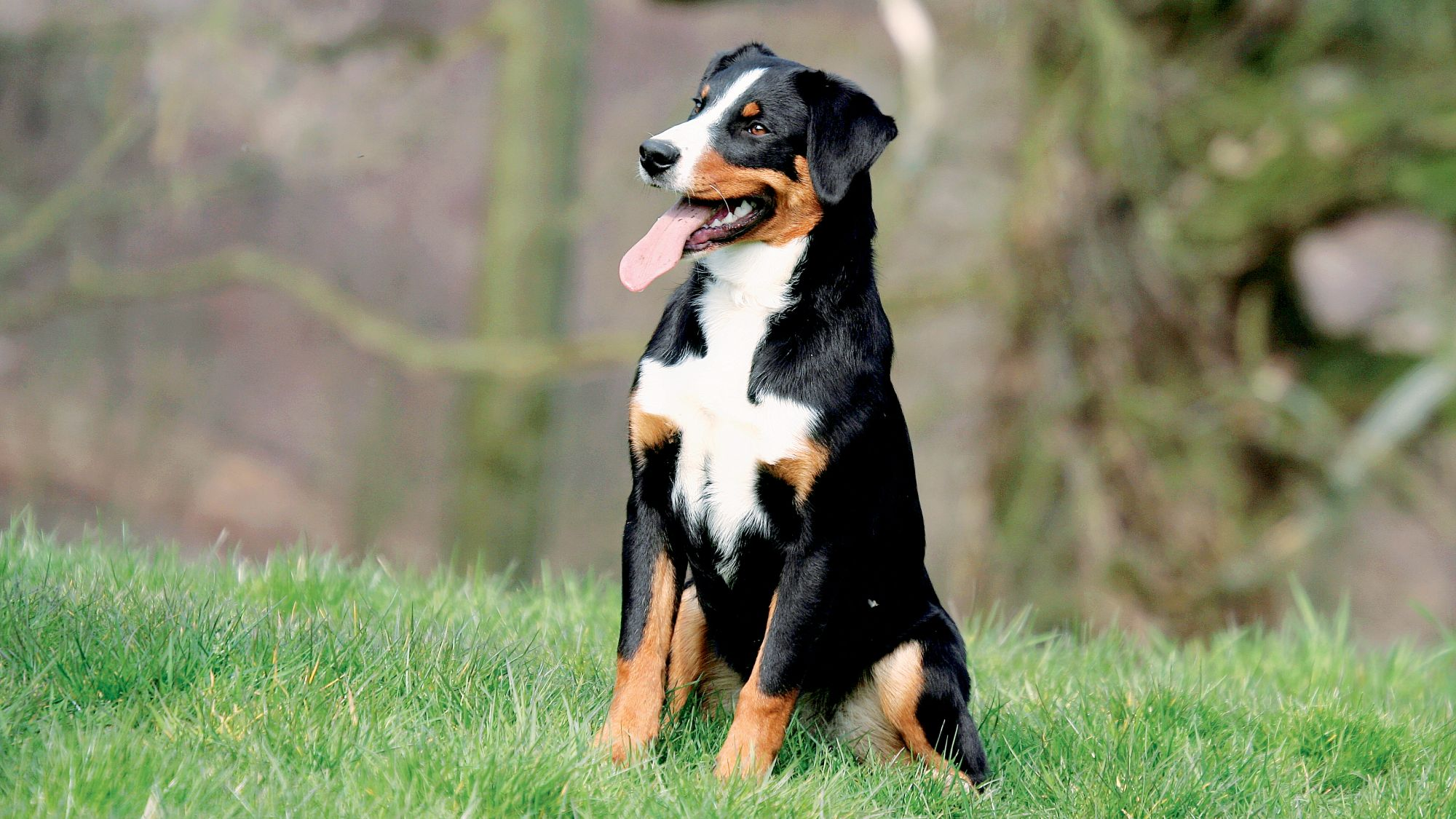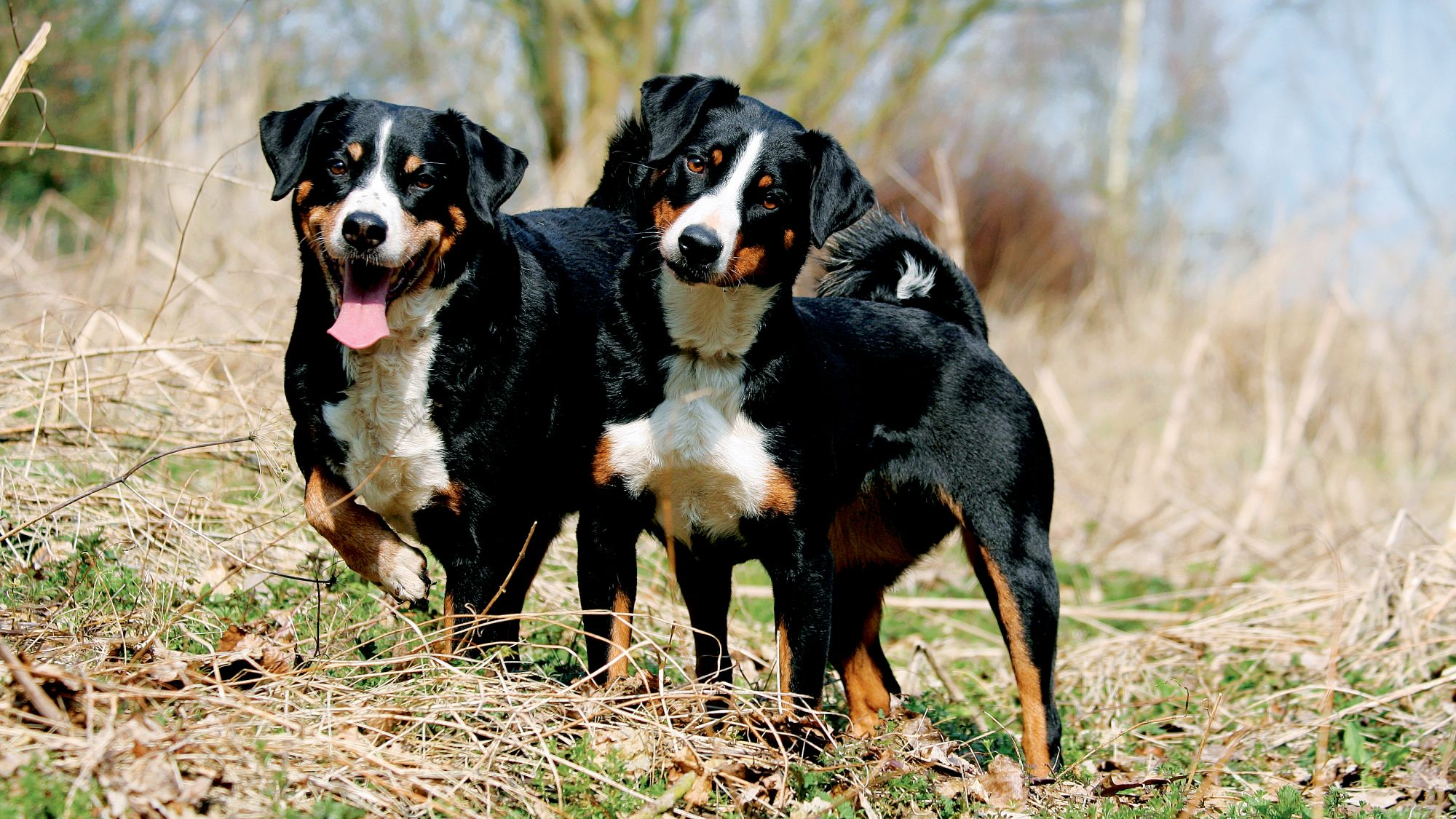
Let's talk Appenzell Cattle Dogs
Endlessly loyal with an incredibly upbeat temperament, the Appenzell Cattle Dog is a delightful dog. Bred in the mountains of Switzerland as a working dog, their notably stocky body became well-suited to traverse the steep inclines of the region. The breed’s hallmark brown, black, and white markings along with their incredibly jolly outlook continues to win over those who know the Appenzell Cattle Dog well; those who don’t will be converts in no time.Official name: Appenzell Cattle Dog
Other names: Appenzeller, Appenzell Mountain Dog, Bouvier de l’Appenzell, Trybhund
Origins: Switzerland

| Drooling tendencies |
|
Warm weather? |  |
| Shedding level | Suited to apartment living? | ||
| Energy level (high, low, medium) *: | Medium | Family pet? * |

|
| Compatibility with other pets | Can stay alone?* | 
|
* We advise against leaving pets alone for long stretches. Companionship can prevent emotional distress and destructive behaviour. Speak to your veterinarian for recommendations.
Every pet is different, even within a breed; this snapshot of this breed’s specifics should be taken as an indication.
For a happy, healthy and well-behaved pet, we recommend educating and socialising your pet as well as covering their basic welfare, social and behavioural needs.
Pets should never be left unsupervised with a child.
All domestic pets are sociable and prefer company. However, they can be taught to cope with solitude from an early age. Seek the advice of your veterinarian or trainer to help you do this.


| Baby age: | Birth to 2 months |
| Puppy age: | 2 to 12 months |
| Adult age: | 1 to 7 years |
| Mature age: | 7 to 10 years |
| Senior age: | from 10 years |

1/7
Get to know the Appenzell Cattle Dog
All you need to know about the breed
A huge team player with a great attitude. That’s not a description from a corporate handbook but one for the Appenzell Cattle Dog, the placid dog who started life in the rugged Swiss hills—in the Appenzell region, to be exact. As an aide to the Senn, or herders (the German name for the breed is Appenzell Sennenhund), this very intelligent breed has traditionally been used as a general farm dog, helping to herd livestock and pull carts. They were also used for guarding purposes, to ward off would-be intruders to the homefront.
Although well-known in Switzerland, the Appenzell Cattle Dog breed is probably the least known of the quartet of Swiss Mountain Dogs to which it belongs, the others being the Bernese Mountain Dog, Entlebucher Mountain Dog, and Greater Swiss Mountain Dog. Each of the dogs shares a carefree, cooperative nature and that rich brown, black, and white coat. But wait, there’s more! The Appenzell Cattle Dog is also confident, fearless, dependable, and laid back.
The Appenzell Cattle Dog was bred as a working dog so consequently needs a lot of daily exercise and room to run. A lot. They’ll quickly become bored and restless if not actively occupied, especially if kept in a space that doesn’t allow for this freedom. City dwellers take note: This is a dog not suited to apartment life. You can take the dog out of the country …

2/7
2 facts about Appenzell Cattle Dogs
1. Bit of a barker
As one bred to work in the mountains and keep their owners alert to all goings-on, the Appenzell Cattle Dog has a tendency to bark, and at times a little too much. It’s just their way of fulfilling their duties but make sure to train your Appenzell Cattle Dog early on so they’re clued in to what is important and what’s not.
2. Almost too healthy?
There is no perfect dog, but when it comes to maintaining a great state of health, the Appenzell Cattle Dog checks many of the right boxes. This is a hardy breed with a solid constitution. Their emotional health is just as strong, with an incredibly lively outlook that makes it seem like everything they encounter is a huge pleasure.
History of the breed
The Appenzell Cattle Dog made their debut in the mid-1850s in the Appenzell region of Switzerland but were given a bigger push onto the world stage by breed promoter Max Siber. They were given official breed status by the Swiss Cynological Society in 1898.
The breed is one of four mountain dogs born and bred in the Swiss Alps to herd cattle across steep mountain terrain. Along with their brethren the Bernese Mountain Dog, Entlebucher Mountain Dog, and Greater Swiss Mountain Dog, Appenzell Cattle Dogs were counted on by Swiss cattlemen to move their herds with ease. The role was hugely important before industrialisation took over. Cheese and milk chocolate are the two major products of the Swiss economy.
The Swiss Appenzell Bouvier Club was founded in 1906 by Albert Heim with the first breed standard being drawn up in 1914. The Federation Cynologique Internationale (FCI) then recognised the breed and wrote their standard in March of 2003. With the huge fan base the breed now enjoys, it’s hard to see why it took so long.

4/7
From head to tail
Physical characteristics of Appenzell Cattle Dogs
1. Ears
Ears set high, wide at base, triangular in shape.
2. Head
Wedge-shaped head, flat on top, straight muzzle.
3. Body
Compact, solid body, long back, robust in nature.
4. Tail
Thick, medium-length tail.
5. Coat
Short coat with firm, dense, shiny hair, in characteristic brown, black, and white colouring.

5/7
Things to look out for
From specific breed traits to a general health overview, here are some interesting facts about your Appenzell Cattle Dog

6/7
Caring for your Appenzell Cattle Dog
Grooming, training and exercise tips
Grooming the Appenzell Cattle Dog is a pleasure. Their thick double coat has a natural sheen and will stay its shiny best if given a weekly brush-through. To note, they will shed their coat twice a year. Since this is a dog that spends so much time outside, their ears could gather debris. Make sure to check them frequently and clean as needed. As with all breeds, keep their nails trimmed to avoid any potential – and unnecessary – injury.Exercise, exercise, and more exercise, that’s the name of the game for the Appenzell Cattle Dog breed. Given their history in the mountains, this is a breed that needs to move, and is more than willing to do so. They will excel at agility, herding and obedience competitions, if you care to enter them, and the dog has been used for search and rescue teams as well.
A self-confident dog through and through, training the Appenzell Cattle Dog breed is a very enjoyable task. Known to be docile and very content, they take to education well although their high intelligence means they will need a firm hand all along the way. Once trained, this loyal breed will be your best friend for life.
7/7
All about Appenzell Cattle Dogs
The Appenzell Cattle Dog is indeed a fantastic breed, especially when it comes to settling in with the family. Always ready with affection and loyal to the end, this dog is merry on even the worst days. They adore being part of the human pack, even if it may involve a dog or two. Take note of them around children, as this powerfully muscular dog could knock them over without meaning to.
Not rare per se, but the Appenzell Cattle Dog may not be as well-known as the others in the Sennenhund group of Swiss Mountain dogs, which include the Bernese Mountain Dog, Entlebucher Mountain Dog, and Greater Swiss Mountain Dog, all lauded for their carefree nature and incredibly jovial appearance. The Appenzell Cattle Dog possesses all of the same wonderful characteristics as well, known to be just as friendly and approachable as their fellow Swiss canines.
translations.feature.breeds.otherbreeds
Read more on this topic

How your dog's nutrition needs change with age

How to adopt a dog

Things to consider before getting a dog
Sources
1 - Veterinary Centers of America https://vcahospitals.com/
2 - Royal Canin Dog Encyclopaedia. Ed 2010 and 2020
3 - Banfield Pet Hospital https://www.banfield.com/
4 - Royal Canin BHN Product Book
5 - American Kennel Club https://www.akc.org/



